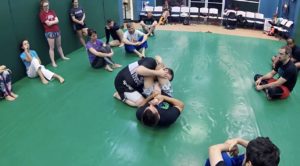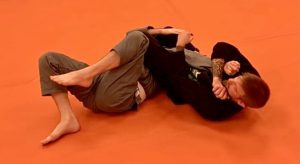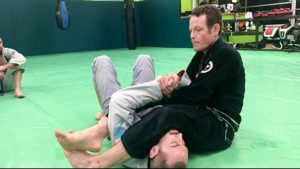For many of us, the armbar from closed guard may be the entry point into the endless rabbit hole of Jiu Jitsu techniques. It probably was one of the first submissions you achieved on a training partner and one of the first techniques that your training partner caught you with. That does not, however, mean that the armbar is a beginner technique that holds no promise of success for an advanced practitioner. In fact, a study done by US Grappling in 2017 shows that the armbar was the most frequent submission in 4,000 submission-only matches at all skill levels.
Part of its high rate of success is dependent upon its connection to one of the primary strategies expressed through BJJ, namely, the use of larger muscle groups to attack a smaller one with the aid of leverage. In the armbar the practitioner has all the advantage of their posterior chain to generate force on their partner’s single arm. Properly executed a 150 lbs. person could armbar someone outweighing them by 100lbs. In my experience, the same cannot be said for some other favored submissions. As a smaller grappler, I have had larger partners resist and fight out of a fully locked-in choke, but with the armbar, once their hands have been separated, the result is almost assured. Furthermore, the armbar is accessible from closed guard, half guard, open guard, 50/50, mount, back mount, from standing, passing, etc. This versatility is definitely a large part of its success and the opportunities to catch an armbar on your partner are many if you’re focused on them.
There are a few key elements to any good armbar variation. First, you will have to have some kind of control over your partner’s shoulder. If your partner has the opportunity to create space and movement at their shoulder, they will make it difficult to finish the submission. In the mounted armbar scenario this is best seen when you sit back to generate force and finish the armbar. If your hips are not tight to your partner’s shoulder, they will be able to create space and escape. In an armbar from guard, if you do not have your partner’s posture broken, they will be able to move away from your hips and take advantage of space to pull free of the attack. Second, control over the location of their elbow “pit”. A typical cue when teaching the mounted armbar is to have their thumb pointing up as you pull back on the arm. With the thumb up, the elbow “pit” lines up toward the ceiling and provides the breaking point for the submission. Third, pressure and force generation will be key. In the mounted armbar, keeping your body weight on top of your partner and preventing movement of their shoulders makes the finish just a matter of time. Also, in any scenario where your back is on the mat, keeping a rigid spine keeps your partner’s shoulders under control and allows the best mechanical advantage for force generation. It also prevents you from being stacked. Lastly, grip breaking. The typical defense will be to clasp the hands together to prevent separation. The techniques for grip breaking are many and varied depending on your partner’s reaction and certainly will be covered by your instructors during class.
Since the armbar is one of the most successful submissions in Jiu Jitsu, all practitioners should not only make the offensive strategies and techniques a part of serious study, but we should know how to defend and escape from them as well. What makes for a good armbar: shoulder control, location of the elbow, pressure/force generation, and grip breaking also should be the points at which we look to capitalize upon when escaping. Escaping, in general, is not only about the technical steps but also about the small windows of error in our partner’s technique, and the use of timing (and maybe some guile) to turn the tables. 
During armbar month wisdom would say to truly focus on technique. Ask questions of your training partners and coaches, take notes after class, and take advantage of the drill roll classes to get enough practice on the techniques learned during the week. Stretch yourself beyond your comfort zone to try new things in your game. Look for the armbar above other submissions this month and do not be afraid of failure. This is how you learn.
Author: Chris Robinson

